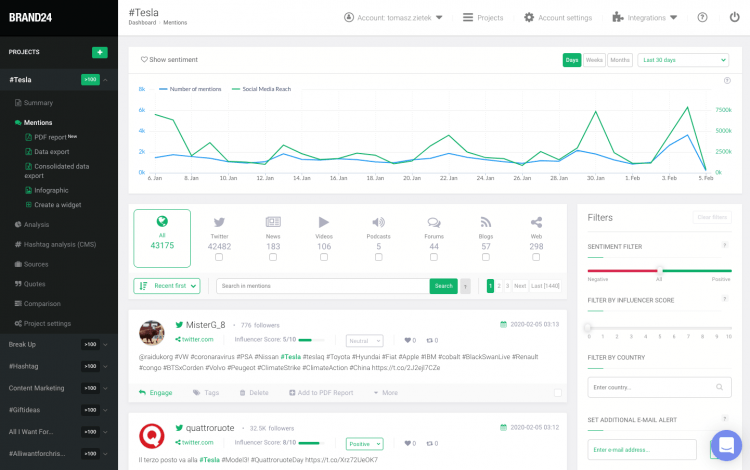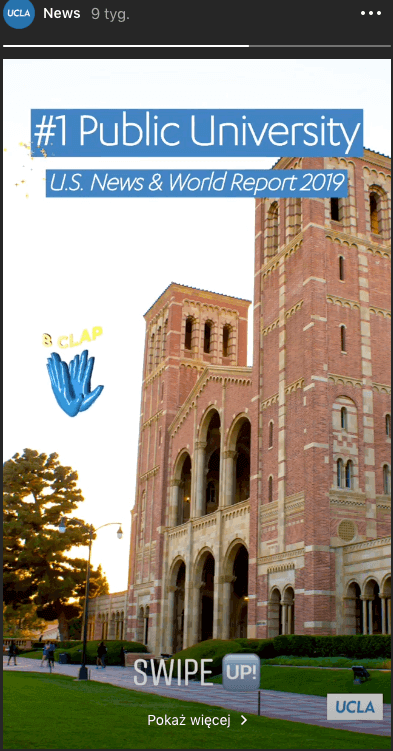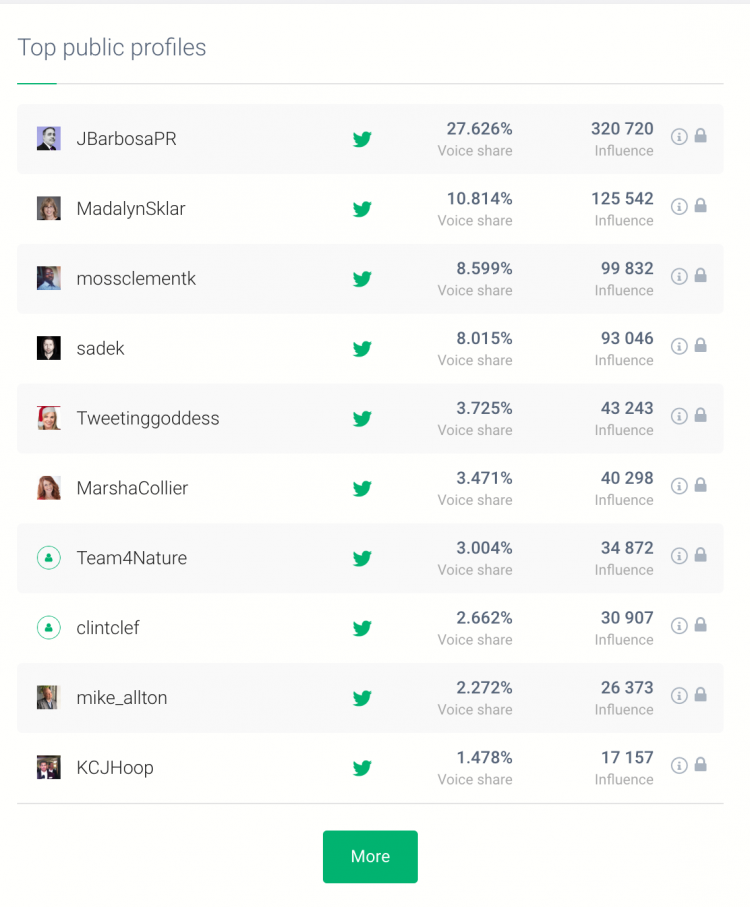Digital marketing strategies for higher education
Table of contents
The need for a robust digital marketing strategy affects many different businesses and organisations, including higher education institutions. There are many obstacles to building a digital marketing strategy for an educational organisation, starting with its size (a whole university is a universe on its own, with many different departments and interest groups), and ending with different target audiences you need to reach.
Therefore, digital marketing strategy for a higher education institution seems like a daunting task.
Hopefully, this blog post will help you a bit.
Here’s our itinerary for today:
Why is digital marketing strategy for higher education important?
It’s safe to assume that all of your current and prospective students are active online.
They are your target audience. To reach them, you need a robust digital marketing strategy written for a higher education organisation.
Both prospective students and their parents are looking for information about campuses, courses, and other relevant aspects of students life online.
You need an all-around marketing strategy, starting with a strong social media presence, through digital communication methods that include not only emails but also messenger bots and ending at university blogs.
According to Statista, almost 18% of high schools students browse through universities’ Instagram accounts multiple times a day.
The number will increase in the future. The new demographic expects you to manage multiple social media accounts, provide engaging content on a regular basis, and reply almost instantly to their messages.
Obstacles in marketing for higher education
The bad news is there are plenty of obstacles when it comes to digital marketing strategy.
The good news is that, with the right planning and a little help from some social media tools, you can become a leader in the competitive world of marketing for universities.
1. Different audiences
When you’re running a business one of the first marketing activities you have to perform is to create clients personas. You create an ideal client and analyse all the information, for example, demographic data, but also information about their hobbies and interests. The more information you can gather, the better.
When it comes to creating client personas for digital marketing strategy for a higher education institution, the problem is the size of your audience.
You should target five separate groups:
- prospective students and their parents;
- currently enrolled students;
- alumni;
- possible donors;
- possible new hires.
Each of this group has different needs and expectations when it comes to digital marketing. It would be best to develop a different marketing strategy for each persona.
It is time-consuming, but the rewards are worth it.
2. The size of a university
Most universities resemble a corporation, with different departments, faculties, and communities interacting with each other. The problem with implementing a digital marketing strategy is, therefore, twofold.
First of all, all the marketing activities should align together. It’s hard, considering all the different target audiences and messages, but many universities digital marketing strategies proved it can be done.
Secondly, all the parties need to be empowered to adjust the strategy to their needs. You can’t broadcast the same message to your prospective students and professors or staff members you’d like to hire.
The size of educational institutions is both a blessing and a curse.
It might be hard to reach a consensus and work out a decision-making process that won’t take ages to implement.
But it also means you have the people to work with. It takes a village not only to raise a child but also to develop and implement an effective digital marketing strategy.
3. Always online generation and brand reputation
Having a great digital marketing strategy won’t help you if you don’t have an impeccable brand reputation.
Your reputation precedes you, so make sure that any negative opinions Internet users might find about your institution are taken care of.
Receiving a negative review is not an end of the world. On the contrary, it might boost your online presence and establish your reputation. You’ll read all about it in our post: Positive Sides of Negative Reviews.
Effective higher education digital marketing tactics
Once you’re familiar with the opportunities and threats of your online marketing strategy, it’s time to see what activities will bring the highest social media ROI.
The ultimate goal of your digital marketing strategy is to build a unique presence on all social media channels you’re active on. There are plenty of higher education institutions and your job is to differentiate yours from the crowd.
How do you stand out in the sea of online content? Here’re a few tips and tricks!
1. Impeccable university reputation
That’s a starting point for all of your online activities.
I know it doesn’t sound very fancy, but managing a university education is one of the most important tasks in our always online world.
Your reputation precedes you. You can build a robust online presence but without positive brand reputation it won’t do you any good.
An excellent reputation is important for all your stakeholders. That’s why it’s vital to keep your eye on the ball and react on time to all negative mentions on the Internet.
That’s a task for a media listening tool.
Brand24 will track all the mentions containing your predefined keyword on the Internet in real time. When it comes to keywords the sky is the limit – you can monitor your higher education institution name, your branded hashtag, or general terms connected to higher education.
Brand24 will not only track the mentions in real time; the tool will also:
- assign a sentiment to the mention (positive, negative or neutral);
- show the influence of the author of mention;
- analyse the social media reach and number and type of interactions
2. Monitoring sentiment around your brand
When it comes to managing university brand reputation, take a closer look at sentiment analysis.
It will help you react in time to all the negative mentions and nip the problem in the bud. Bad news travels fast, and bad news on social media travels even faster. That’s why it’s vital to react on time to all negative mentions and show your proactive approach.
Reacting to positive mentions is important as well. You’ll show your followers that you appreciate their effort. And loyal, engaged followers is what social media presence is all about.

If you’re wondering how to react promptly to mentions concerning your university we got a solution for you. Brand24 offers three types of notifications:
- Slack notifications where you connect your project to a dedicated Slack channel;
- email alerts, where you’ll receive a storm alert every time there’s an unusual spike in the number of mentions. You get to decide what an unusual spike means, number wise;
- in-app notifications – Brand24 offers app both for iOS and Android.
Brand24 offers a 14-day free trial (no credit card required).
3. User-generated content
Saying that your students are your greatest asset is not just an empty slogan. They are natives in the world of digital marketing and probably are already producing a lot of valuable content you could use.
To make it easy to find the content you need, promote your branded hashtag. That’s a unique hashtag you can use for every content you post on Instagram, Twitter, Facebook, or any other social media channel.
For example, the University of Cambridge uses #cambridgeuniversity under every post.
It’s easy to track hashtags across social media, each social media platform has a native search bar you could use.
On some platforms you can simply share the content of other users, but the best practice is to always ask for a permission of the author.
4. Great visuals
We buy with our eyes, and that’s even truer when it comes to social media. That’s why it’s important to present your university in an aesthetic way.
Columbia University takes advantage of its location:
You can capture a stunning sunrise everywhere, the only difficulty is to get up early enough.
You could also show off some interesting projects of your students. A Parisian university of Sorbonne shows off comics centred around their research:
And Penn State promotes nature and beautiful autumnal colours on its campus:
Take a closer look at the description of the photo. It’s a great and clear call-to-action. Use a branded hashtag to have your photo featured on the main page of the university.
Another example of effective call-to-action is the description of UCLA’s Instagram description:

That way your branded hashtag is even more popular and widespread.
5. Promoting activities for current students
While a solid social media presence will help with your prospective students, people that are currently enrolled are looking for something a bit different. They already know how great your campus is, what they’re looking for is information.
Yale University informed its students about a presentation of a domestic medicine manual from 1900:
UCLA went a step further and uses Instagram Stories to present the latest news from the campus.
It might be a good idea to trick the Instagram algorithm, especially in the beginning of the journey when you’re still building your Instagram engagement.

6. Influencer marketing for universities
Influencer marketing is not only for fashion or beauty brands. As a higher education institution, you can benefit from an influencer marketing campaign as well.
The key to a successful influencer marketing campaign for universities is thorough research. Your next influencer is probably already talking about your institution.
Set up a general project in Brand24. Focus on general topics related to higher education, university life, etc. Give Brand24 a couple of days to gather data (social media tools, in general, don’t analyse historical data) and afterwards take a look at the Analysis tab.
When you scroll down you’ll find two tables that are most interesting for you.
The first one is called Top public profiles and shows the share of voice (number of discussions initiated by a given author) and their influence.

The second one, Most active public profiles, indicates reach and the number of mentions. The higher the reach and number of mentions, the more influential author.

You can narrow down the results to the social media platform you’re interested in. The filter is at the top of the page, on the right side.
7. Social media reach for universities
Influencers will do wonders to your digital marketing strategy, but you also need to track and analyse to results of your marketing campaign. One of the key metrics is social media reach.
Social media reach is an estimate of how many people could have seen your content. Of course, you want to reach as many people as possible.

If you see that your social media reach number isn’t growing, you can adjust your strategy. Think about:
- researching new social media channel;
- changing the nature of your content (exploring Instagram Stories, posting more videos, etc);
- altering the message you broadcast.
Investing in your social media will increase the brand awareness of your higher education institution. Of course, it’s only one of the factors when it comes to establishing your university reputation but it’s one you shouldn’t omit.
Interested in these and other aspects of social media monitoring? Give it a test drive!
The future of marketing for higher education
International recruitment is the future of higher education. More and more universities are competing for the attention of international applicants. Their marketing departments are already working at full steam to reach their target audiences.
Universities need to understand the marketplace they will have to operate in. The admission targets will become more strict, and a digital marketing strategy should target precisely defined groups, for example, alumni, prospective students, or possible donors.
The influence of the marketplace will affect not only digital marketing strategies but also courses portfolio, research topics and overall strategy of a whole institution. The firmer grasp you have of the marketplace, the more prepared for all the changes you’ll be.
Social media monitoring tool will combine both qualitative and quantitative data giving you an edge over your competitors. Ready to give it a go?
HANDPICKED RELATED READ
9 Steps to Strong Brand Awareness Strategy [2025]
How to use social media sentiment analysis?
How to measure the share of voice?
10 affordable news monitoring tools to keep you in the know
Top Reads
Brand Monitoring: Tools & Guide for 2026
Brand Awareness Strategy [The Ultimate Guide for 2026]
The Best AI Hashtag Tracker and Other Hashtag Tracking Tools [2026]
Social Media Reach: How to Measure & Improve It in 2026?
X (Twitter) Analytics Tools: The 10 Best to Try in 2026
Sentiment Analysis: What is it & Why do You Need it in 2026?
Share of Voice: Definition, Calculation, Tools [2026 Guide]
Brand Reputation Management: 6 Expert Tips for 2026
A Complete Guide to AI Social Media Analysis [2025]
How to See How Many Times a Hashtag Was Used on X (Twitter)
Start Social Listening!
Get the Brand24 trial and start social listening like a PRO.